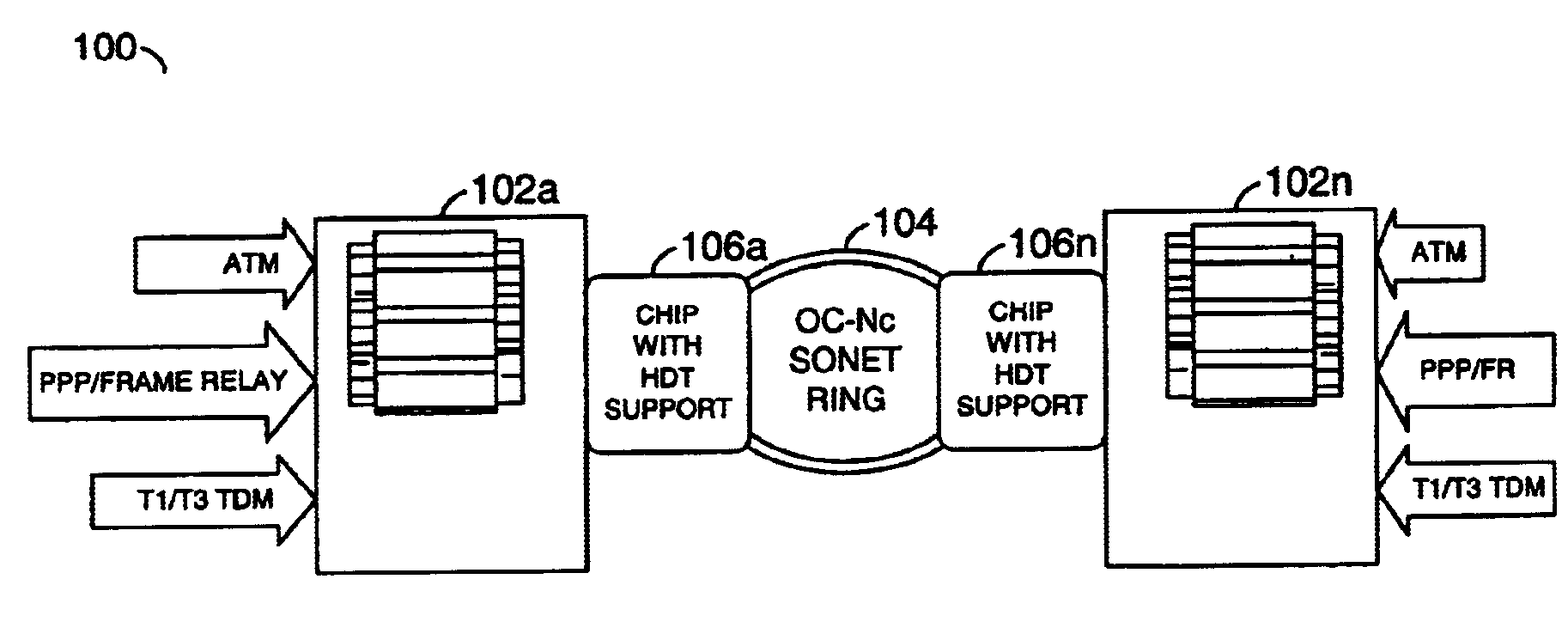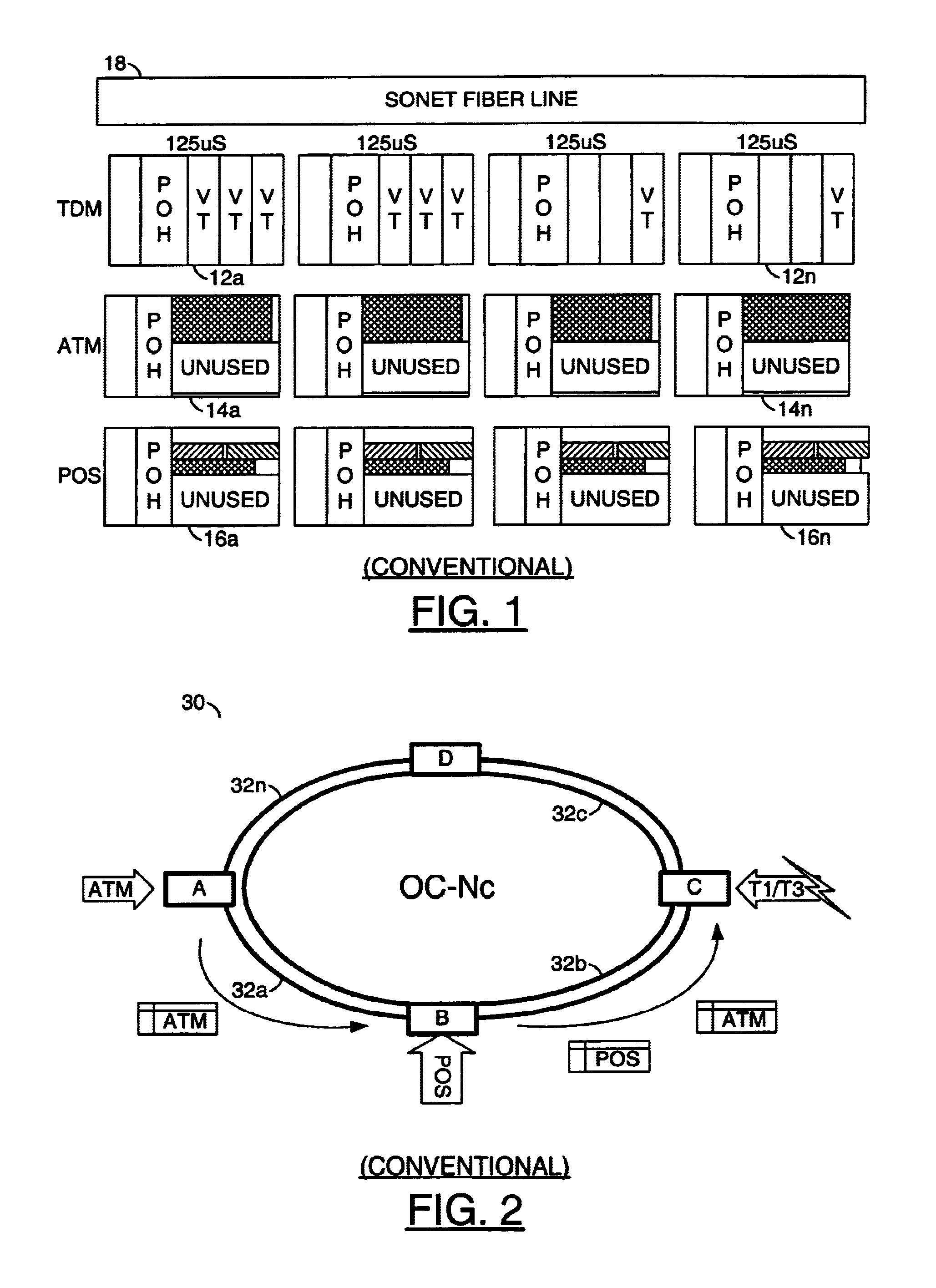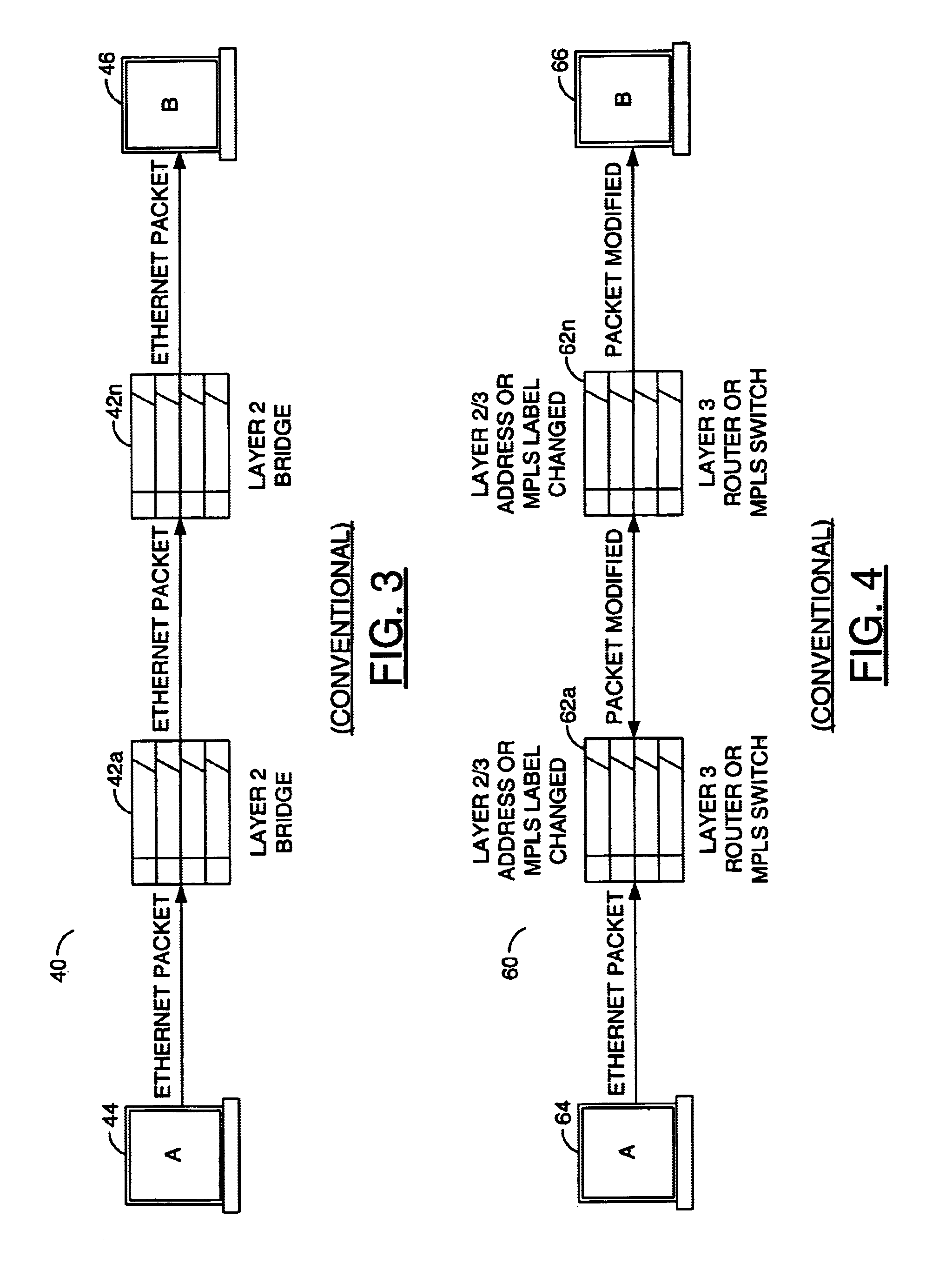Hybrid data transport scheme over optical networks
a data transport and optical network technology, applied in data switching networks, instruments, frequency-division multiplexes, etc., can solve the problems of inability to carry fixed-bandwidth and variable-bandwidth channels, inability to support data mixing, and inability to efficiently utilize fiber bandwidth for data packets of sonet/sdh, so as to improve packet transport performance, detect and possibly bypass a faulty node quickly, the effect of easy fault analysis
- Summary
- Abstract
- Description
- Claims
- Application Information
AI Technical Summary
Benefits of technology
Problems solved by technology
Method used
Image
Examples
Embodiment Construction
[0067]The present invention may provide a Hybrid Data Transport (HDT) protocol that may allow transmission of fixed bandwidth channels (e.g., T1 / T3), variable-bandwidth data sources (e.g., ATM), IP and any other protocol data in a single SONET frame using a single fiber network. The protocol of the present invention may work seamlessly across a mix of SONET and non-SONET networks, and may yield cost savings in fiber infrastructure, equipment, and operation.
[0068]With the use of the Hybrid Data Transport (HDT) protocol of the present invention, an existing fiber network may be fully utilized to transport a number of different types of traffic. The present invention may additionally dynamically manage bandwidth usage on a packet-by-packet basis.
[0069]The present invention may provide spatial reuse of bandwidth, allocation of PDH bandwidth in 64 Kbps increments, protocol-independent MPLS (Multi-Protocol Label Switching) support, and / or seamless operation over point-to-point and ring ne...
PUM
 Login to View More
Login to View More Abstract
Description
Claims
Application Information
 Login to View More
Login to View More - R&D
- Intellectual Property
- Life Sciences
- Materials
- Tech Scout
- Unparalleled Data Quality
- Higher Quality Content
- 60% Fewer Hallucinations
Browse by: Latest US Patents, China's latest patents, Technical Efficacy Thesaurus, Application Domain, Technology Topic, Popular Technical Reports.
© 2025 PatSnap. All rights reserved.Legal|Privacy policy|Modern Slavery Act Transparency Statement|Sitemap|About US| Contact US: help@patsnap.com



